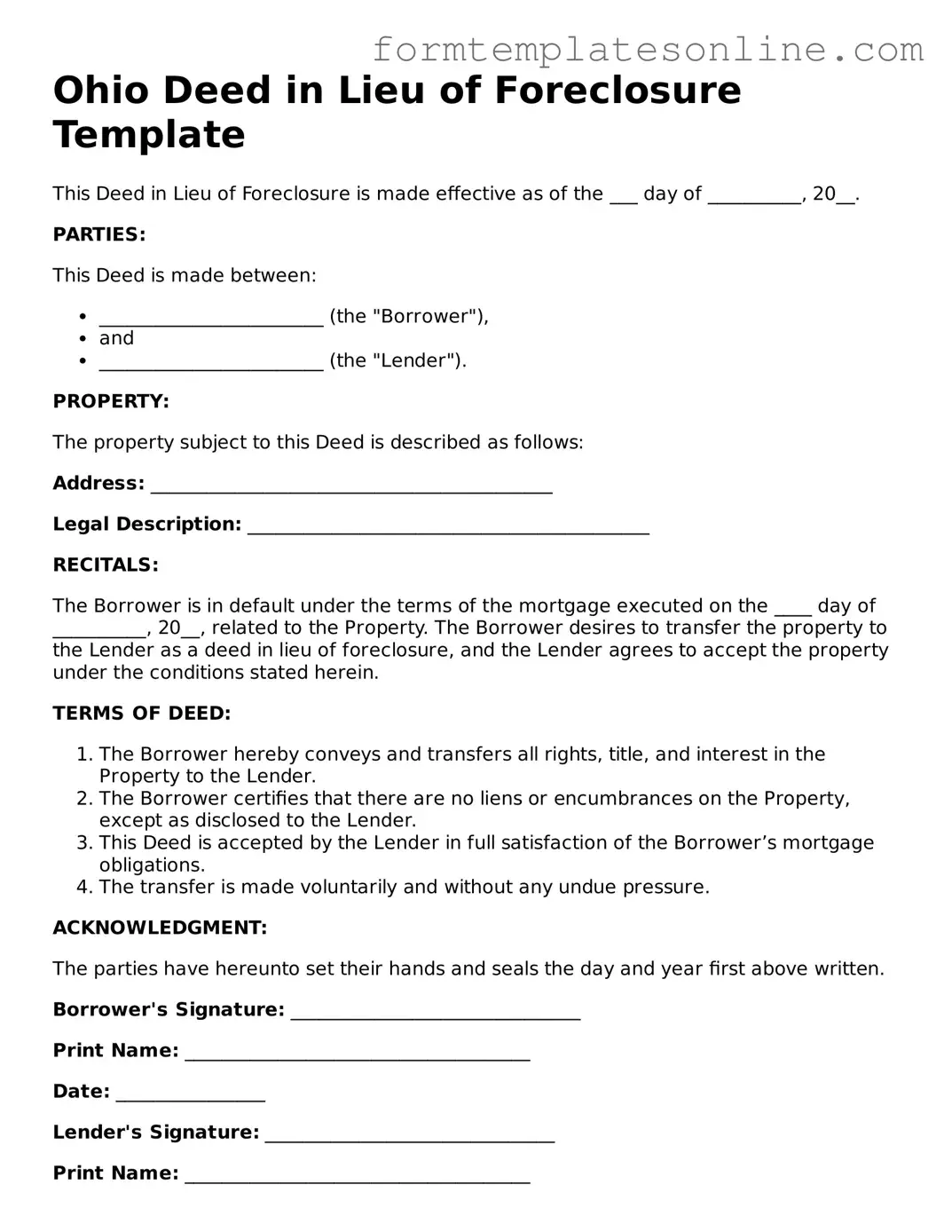What is a Deed in Lieu of Foreclosure?
A Deed in Lieu of Foreclosure is a legal agreement in which a homeowner voluntarily transfers the ownership of their property to the lender to avoid foreclosure. This process allows the homeowner to relinquish their property and potentially reduce the negative impact on their credit score compared to a foreclosure proceeding.
Who is eligible for a Deed in Lieu of Foreclosure in Ohio?
Eligibility typically depends on the lender’s policies and the homeowner's financial situation. Generally, homeowners who are experiencing financial hardship and cannot keep up with mortgage payments may qualify. It is essential to demonstrate that foreclosure is unavoidable and that the homeowner has made efforts to resolve the situation, such as trying to sell the property or obtain a loan modification.
What are the benefits of choosing a Deed in Lieu of Foreclosure?
One significant benefit is the potential for a less damaging effect on the homeowner's credit score compared to a foreclosure. Additionally, the process can be quicker and less costly than a traditional foreclosure. Homeowners may also avoid the stress and uncertainty associated with a lengthy foreclosure process.
What are the potential drawbacks of a Deed in Lieu of Foreclosure?
While there are benefits, there are also drawbacks. Homeowners may still face tax implications, as forgiven mortgage debt may be considered taxable income. Furthermore, not all lenders accept a Deed in Lieu of Foreclosure, which could limit options. It is crucial for homeowners to understand these factors before proceeding.
How does the process work?
The process typically begins with the homeowner contacting their lender to express interest in a Deed in Lieu of Foreclosure. The lender will then evaluate the homeowner's financial situation and the property's value. If approved, the homeowner will sign the deed, transferring ownership to the lender, and may receive a release from the mortgage obligation.
Will I need to vacate the property immediately?
Not necessarily. The timeline for vacating the property can vary. Some lenders may allow homeowners to remain in the home for a short period after the deed is signed, while others may require immediate vacating. It is essential to discuss this aspect with the lender to understand their specific policies.
Can I negotiate terms with my lender?
Yes, homeowners can negotiate terms with their lender. This may include discussing the timeline for vacating the property, any potential financial assistance, or the possibility of remaining in the home as a renter. Open communication with the lender is key to finding a mutually agreeable solution.
What should I do if my lender denies my request for a Deed in Lieu of Foreclosure?
If a request is denied, homeowners should ask for specific reasons and explore alternative options. This may include pursuing a short sale, loan modification, or other foreclosure alternatives. Seeking advice from a housing counselor or legal professional can also provide guidance tailored to individual circumstances.
